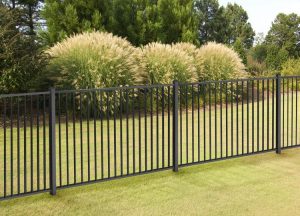Contents
Introduction
Welcome to the Savannah Gate and Fence Company blog, where we provide valuable insights and expert advice on maintaining your fence throughout the year. Your fence is not only a functional element but also an important aesthetic feature that enhances the beauty and security of your property. By implementing proper maintenance practices, you can ensure the longevity and durability of your fence. In this article, we will guide you through the essential steps to maintain your fence, address common issues, and answer frequently asked questions.
Understanding the Importance of Fence Maintenance
Regular fence maintenance is crucial for preserving its integrity and functionality. By taking proactive measures, you can prevent common problems such as rotting, warping, and insect infestations. Maintaining your fence also helps in enhancing its curb appeal and protecting your investment. Neglecting proper maintenance can lead to expensive repairs or even the need for a complete replacement. At Savannah Gate and Fence Company, we believe in the value of preventive care, and we are here to assist you in keeping your fence in top condition.
Tips for Regular Fence Maintenance
To maintain your fence’s appearance and functionality, follow these tips:
- Inspect Regularly: Perform visual inspections of your fence to identify any signs of damage, wear, or loose components. Look for rotting wood, loose nails or screws, broken boards, or rusty hinges.
- Clean Properly: Regularly clean your fence to remove dirt, debris, and mildew. Use a mild detergent and warm water, and gently scrub the surface with a soft brush or sponge. Rinse thoroughly with a garden hose.
- Trim Vegetation: Trim any bushes, vines, or tree branches that may be encroaching on your fence. Overgrown vegetation can cause damage and promote moisture retention, leading to wood decay.
- Protect from Moisture: Apply a weather-resistant sealant or paint to protect your fence from moisture damage. This helps prevent rot, warping, and mold growth.
- Address Small Repairs: Promptly address any minor repairs, such as loose boards or broken hinges. These small issues, if left unattended, can worsen over time and compromise the structural integrity of your fence.
By implementing these regular maintenance practices, you can significantly extend the lifespan of your fence and maintain its aesthetic appeal.
Seasonal Maintenance Guide
Different seasons bring varying challenges for fence maintenance. Here are some guidelines to help you care for your fence throughout the year:
Spring
- Inspect for Winter Damage: After the winter season, inspect your fence for any signs of damage caused by freezing temperatures, heavy snow, or high winds. Look for loose boards, broken fasteners, or leaning posts.
- Clean and Stain: Spring is an excellent time to thoroughly clean your fence and apply a fresh coat of stain or paint. This helps protect the wood from the upcoming summer heat and humidity.
- Trim Surrounding Plants: Trim any overgrown plants and remove debris that may have accumulated around your fence during the winter.
Summer
- Monitor Moisture Levels: The summer heat and humidity can cause wood to expand and contract, leading to warping or cracking. Ensure proper ventilation and monitor the moisture levels around your fence.
- Check for Pest Infestations: Inspect your fence for any signs of termite or other pest infestations. Look for small holes, sawdust, or tunnels in the wood. If necessary, contact a professional pest control service.
- Maintain Landscaping: Keep your lawn and landscaping properly maintained to prevent overgrowth from leaning against or damaging your fence.
Fall
- Prepare for Winter: Before the cold weather arrives, inspect and repair any damaged areas. Trim nearby trees and remove fallen leaves and debris that can accumulate and trap moisture against your fence.
- Apply Protective Coating: Apply a protective sealant or stain to safeguard your fence from winter weather conditions, including snow, ice, and rain.
- Secure Loose Components: Ensure that all fasteners, hinges, and latches are secure. Tighten or replace any loose or rusty hardware.
Winter
- Remove Snow Buildup: After heavy snowfall, gently remove the snow from your fence using a soft broom or brush. Avoid using sharp objects that could damage the surface.
- Inspect for Ice Damage: Check for any signs of ice damage, such as cracked or split wood. Address these issues promptly to prevent further deterioration.
Common Fence Problems and Solutions
Even with regular maintenance, fences may encounter common problems. Here are a few issues you might face and their respective solutions:
- Rotting Wood: Rotting wood is often caused by excessive moisture. Replace affected boards and address the underlying cause, such as poor drainage or lack of sealant.
- Warping: Wood can warp due to exposure to moisture and temperature changes. Straighten warped boards or consider replacing them if the damage is extensive.
- Insect Infestation: Termites and other insects can wreak havoc on wooden fences. Consult with a professional pest control service to eliminate the infestation and take preventive measures.
- Loose Fasteners: Over time, nails, screws, and other fasteners may become loose. Regularly inspect your fence and tighten or replace any loose or damaged fasteners.
- Fading Paint/Stain: Direct sunlight can cause paint or stain to fade over time. Reapply a fresh coat to rejuvenate the appearance of your fence.
By addressing these common issues promptly, you can maintain the longevity and functionality of your fence.
Frequently Asked Questions (FAQs)
1. How often should I inspect my fence?
We recommend inspecting your fence at least twice a year, preferably in spring and fall. However, it’s a good idea to perform visual checks regularly to identify any visible damage or maintenance needs.
2. Can I clean my fence with a pressure washer?
While pressure washers can be effective, they should be used with caution. High-pressure settings can damage or splinter the wood. If you choose to use a pressure washer, ensure it is set to a low-pressure setting, and maintain a safe distance from the fence surface.
3. How can I protect my fence from pests?
To prevent pest infestations, regularly inspect your fence for signs of damage or holes. Keep surrounding vegetation trimmed, as overgrown plants can attract pests. If you notice any pest activity, contact a professional pest control service.
4. Is it necessary to seal or paint my fence?
Sealing or painting your fence is highly recommended to protect it from moisture, UV rays, and other environmental factors. A protective coating helps prevent rotting, warping, and fading, ensuring the longevity of your fence.
5. When should I consider replacing my fence?
If your fence has extensive damage, such as severe rotting, significant warping, or multiple broken boards, it may be more cost-effective to replace it rather than investing in numerous repairs. Consult with a professional to assess the condition of your fence and determine the best course of action.
Conclusion
Maintaining your fence all year round is essential for its longevity, functionality, and aesthetic appeal. By following our expert tips and guidelines, you can ensure that your fence remains in excellent condition. Regular inspections, proper cleaning, addressing repairs promptly, and seasonal maintenance are key to preserving the beauty and durability of your fence. If you need any assistance or have further questions, feel free to reach out to us at Savannah Gate and Fence Company by calling 912-800-0818 or visiting our website here. Let us help you keep your fence in optimal condition, enhancing the security and visual appeal of your property.




